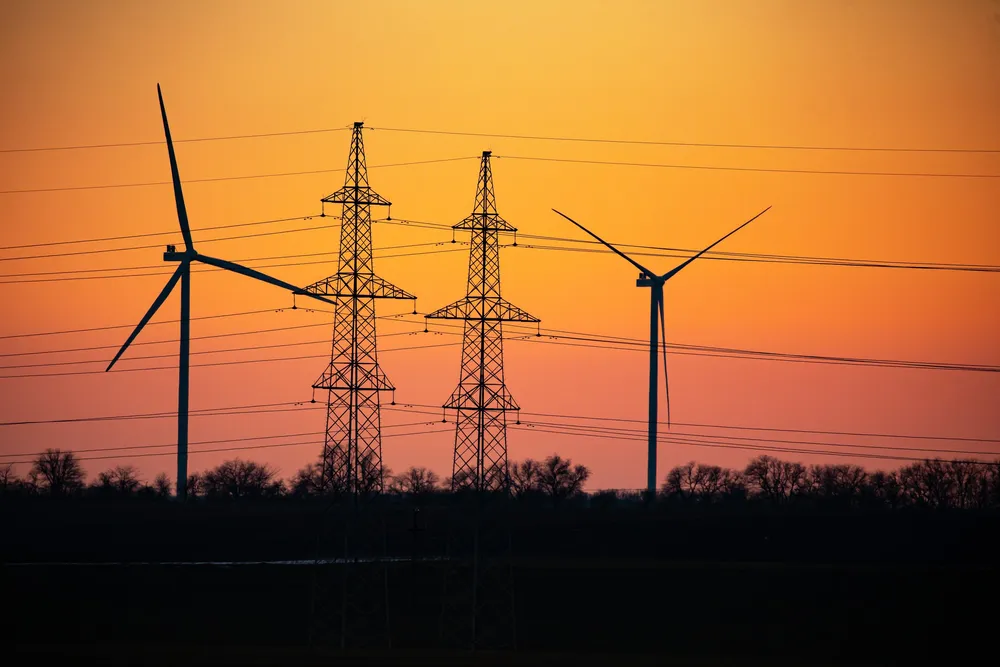'Onshore wind costs on the rise in EU as offshore falls'
Cost of offshore wind rose sharply due to supply chain pressures and inflation after invasion of Ukraine, but new Ember figures suggest that trend may now be reversing

Onshore wind became more expensive in the EU last year while the cost of offshore wind fell, finds a new report – while healthier turbine makers and competition from China are expected to drive prices across the sector down in the future.
In Germany, Ember said the levelised cost of energy (LCOE) for onshore wind rose slightly from €39-83/MWh in 2021 to €43-92/MWh in 2024.
“By contrast, in the offshore sector, a steeper learning curve and continued improvements in capacity factors have allowed cost declines to continue,” said Ember. The LCOE estimate for Germany last year was €55-103/MWh, it said, lower than the pre-energy crisis level of €73-121/MWh in 2021.
Ember said macroeconomic factors have “disproportionately impacted” wind due to long project lead times and relatively high upfront costs. This partly explains why wind capacity additions have remained similar year-on-year, rather than accelerating quickly like solar.
“However, wind remains cost competitive with fossil power, and recent policy changes are starting to show results, with turbine orders, auction volumes and permitting rates all increasing.”
Short-run marginal cost of EU gas higher than onshore and offshore wind
In Europe, the cost of wind turbines has increased by approximately 10% since 2021, said Ember, based on Vestas and Nordex average prices.
“But the majority of this occurred between 2021 and 2022, with prices remaining flat in 2024 compared to 2023.”
Additionally, Ember said the cost of capital in the energy sector increased in 2024 – to 6.6% weighted average cost of capital from 6% in 2022/23 – but by less than the previous annual rise (5.1% to 6%).
These cost increases have however "counteracted the economic benefits" of continued technological improvements, it said.
The price of gas on European markets has meanwhile “grown steadily throughout 2024,” starting the year at around €30/MWh and ending at around €50/MWh, “well above the pre-crisis norm of €20/MWh.”
“Accordingly, the average short-run marginal cost of EU gas power across 2024 was an estimated €96/MWh, reaching a high of around €125/MWh in December. This remains above the typical cost of both onshore and offshore wind in the EU in 2024.”
Healthier OEMs and Chinese competition to drive down prices
Continued deployment of wind power will therefore have an important role to play in reducing electricity prices in the EU even in the absence of further cost reductions, said Ember
The think tank does however expect that the cost of wind will start falling again as supply chains recover, inflation eases and technology advancements continue.
“Some indicators of recovery are already visible,” it said. Turbine prices rose after most European OEMs posted losses in 2022, but their financial positions have “significantly recovered since”.
“This recovery, plus increased competition from Chinese suppliers, is likely to put downward pressure on prices. Furthermore, the price of steel – the single biggest material cost for a wind turbine – has fallen from its record high in 2022.”
Forecasts of LCOE confirm falling cost expectations, said Ember, with the cost of onshore and offshore wind (in Germany) expected to fall to €39-84/MWh and €53-98/MWh respectively by 2035.
Ember also cited a “strengthening project pipeline,” with auctions awarding a record 28GW of capacity across the EU in 2024, with Germany alone awarding 19GW.
Auctions already announced for 2025 amount to a potential 71GW. If the average success rate of auctions in 2024 was repeated, Ember said auctions this year would deliver 65GW of new capacity.
Coal sinks, solar soars
Other headline findings from the Ember report included solar being the fastest-growing EU power source last year, generating 304TWh, overtaking coal (269TWh) for the first time.
Coal has fallen from being the third-largest EU power source in 2019 to the sixth-largest in 2024, said Ember. This combined with a continued decline in gas power took total EU power sector emissions last year to below half their 2007 peak.
In the five years of the European Green Deal, Ember said a surge in wind and solar generation has saved the EU from importing 92 billion cubic metres more of fossil gas and 55 million tonnes more of hard coal, costing €59bn.
“Fossil fuels are losing their grip on EU energy,” said Chris Rosslowe, senior energy analyst at Ember. “At the start of the European Green Deal in 2019, few thought the EU’s energy transition could be where it is today; wind and solar are pushing coal to the margins and forcing gas into structural decline.”
Sam Kimmins, the Climate Group’s director of energy, said Europe is “finally shaking its fossil fuel habit, and it’s coming just as the Trump presidency promises to drill for more.”
“This report shows there are huge savings to be made from reducing our reliance on fossil fuels, which increases the competitiveness of businesses. Europe is setting an example and needs to continue the trend, which can also limit the shocks of volatile fossil fuel prices.”
(Copyright)